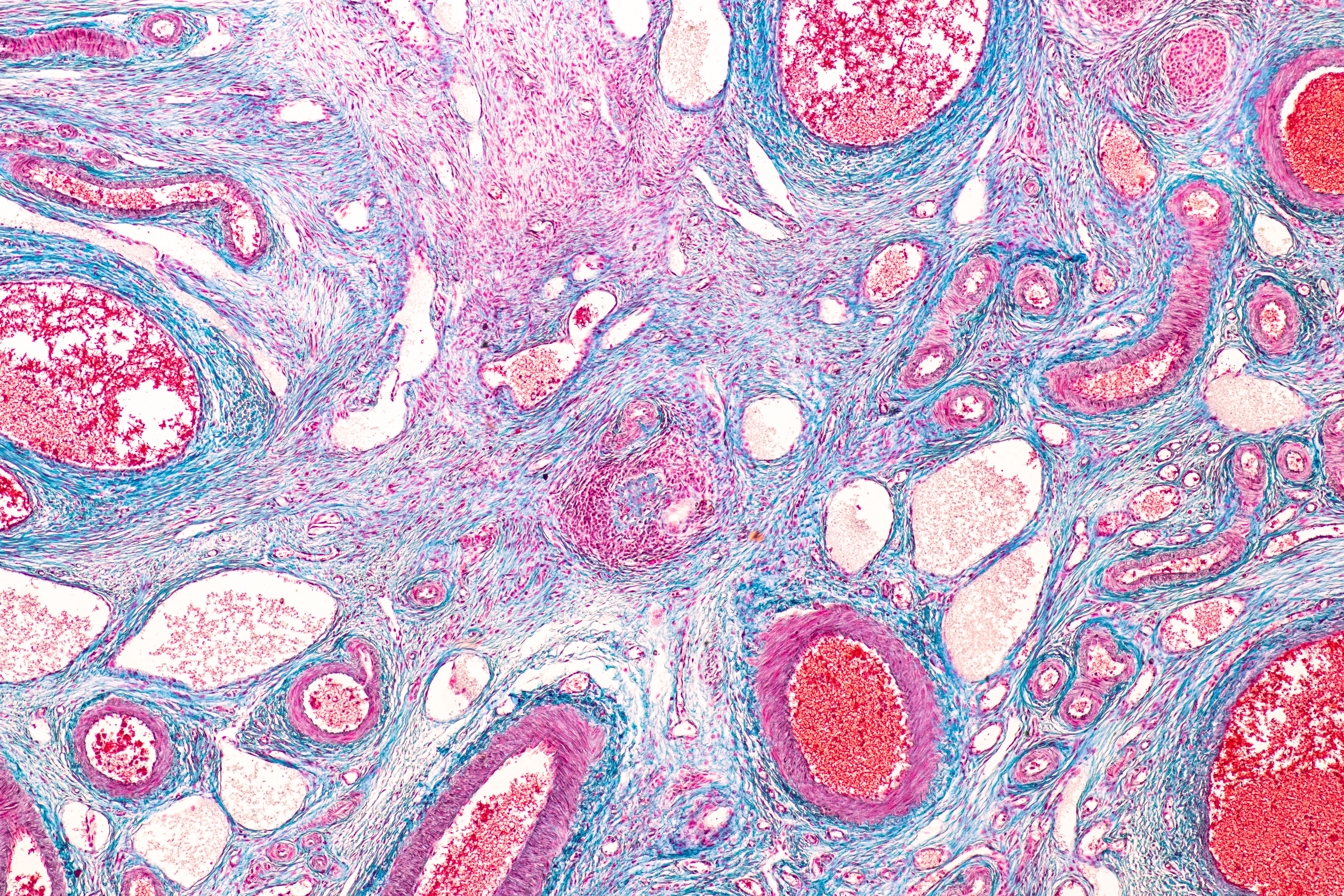Carolina Frailty Index Score Validated in Ovarian Cancer
Carolina Frailty Index Score can effectively assess frailty status in women with ovarian cancer.
Image Credit © sinhyu - www.stock.adobe.com

An ovarian cancer patient's frailty status can be assessed using the Carolina Frailty Index (CFI), according to a poster presented at the 2023 Society of Gynecologic Oncology Annual Meeting on Women's Health.
Using the PROs portion of the cancer-specific geriatric assessment (GA) to inform a CFI, investigators sought to assess the role of frailty among patients with ovarian cancer to be a predictive measure for surgical morbidity and chemotherapy toxicity. Patients who were classified as frail, according to CFI criteria, proved 8 times more likely to die than patients who were classified as robust; whereas those who were prefrail were 11 times more likely to die than robust patients. Similarly, patients who were frail, or prefrail, were significantly more likely to require chemotherapy dose reductions than those who were deemed robust.
When calculating the CFI from a PRO data, 1 woman was redesignated from prefrail to frail. The PRO-only CFI predicted survival by frailty status.
Multiple activities of daily living (AHL) and interactive activities of daily living (I-ADL) measures were significantly associated with frailty. These included walking the block, bathing and dressing, driving, shopping, cooking, and housework (P < .03). The following patient-assessed characteristics were also deemed to be significantly associated with frailty (all P ≤ .01): unintentional weight loss, history of falling in the past 6 months, depression, impediments to socialization, and poor eyesight.
In the poster, study authors explained that frailty measures are used to reduce surgical morbidity and chemotherapy toxicity in patients with cancer. However, there is not a standard tool for measuring frailty among patients within gynecologic oncology.
Data from PRO measures (PROMs) can be used to identify frailty in patients with cancer and may be able to better predict frailty compared with practitioner-administered measures.
The cancer-specific GA uses a combination of PROM data and practitioner-assessed functional measurement so assess fitness in older adults who have cancer. The CFI has been validated across cohort’s patients with cancer, but no patients with gynecologic cancers were included in validation measures. This study represented the first aimed to evaluate the CFI in women with ovarian cancer. The secondary aim of this study was to validate the CFI generated from the PRO only portions of the GA.
This study was conducted out of a single institution; it utilized their registry database to query for patients with ovarian cancer. Upon enrollment, the GA was completed, and data regarding the patient’s cancer status, treatment, and survival were all collected prospectively. The CFI was then calculated to identify whether each patient would qualify as frail, prefrail, or robust.
Of the patients included in this study, 10 were deemed to be frail, 8 were prefrail, and 13 were robust. The median age at diagnosis, between the 3 groups, respectively, was 71.89, 69.72, and 67.26 years.
In the frail group (n = 10), 2 patients were Black (20.0%), and 8, were White (80.0%). One patient (10%) had stage I disease, 8 (80.0%) had stage III disease, and 1 patient had stage IV disease (10.0%). All patients received surgery (100.0%) and chemotherapy (100.0%), 3 patients had received neoadjuvant chemotherapy (30.0%), and 7 patients died during the study (70.0%).
In the frail/prefrail group (n = 8), all patients were White. One patient (12.5%) had stage II disease, 6 (75.0%) had stage III disease, and 1 patient had stage IV disease (12.5%). All patients received surgery (100%) and 6 received chemotherapy (75.0%), with no patients receiving neoadjuvant chemotherapy. Six patients died during the study (75.0%).
In terms of predictive frailty leading to outcomes such as disease recurrence or residual disease, patients identified as frail/prefrail had the highest likelihood of requiring a chemotherapy dose reduction (HR, 12.34; P = .04). Among robust patients the HR was 0.253 (P = .22).
Among robust and frail/prefrail cohorts the HRs for recurrence were 2.19 (P = .10) and 3.80 (P = .21), the HRs for residual disease were 1.38 (P 0.74) and 1.53 (P = .52), respectively. For the length of stay postoperation measured in days, the HR was 1.22 (P = .16) and 0.927 (P = .46), and the 30-day complication HRs were 1.31 (P = .81) and 1.35 (P = .68). Finally, the HRs for R2/suboptimal vs R0/R1/optimal surgical outcomes were 3.74 (P = .26) and 1.98 (P = .29) for the robust and frail/prefrail groups, respectively.
“PROMs center the patient in her care experience and may be useful to both surgical and chemotherapy treatment decision-making,” study authors concluded.
REFERENCE:
Buckingham L, Bui A, Nyrop K, Muss H. A patient-reported outcomes measure derived from the cancer-specific geriatric assessment predicts frailty in women with ovarian cancer. Presented at:Society of Gynecologic Oncology Annual Meeting on Women’s Cancer; March 25-28; Tampa, Florida.










